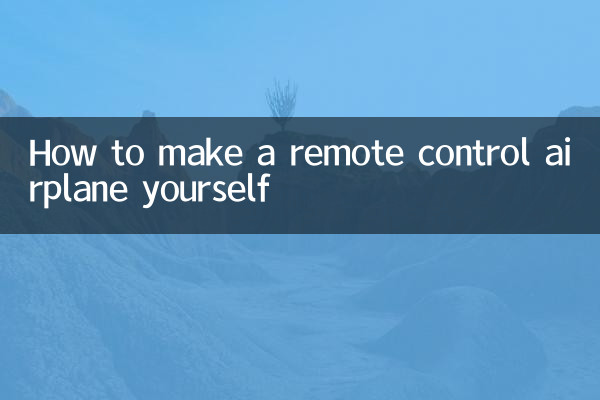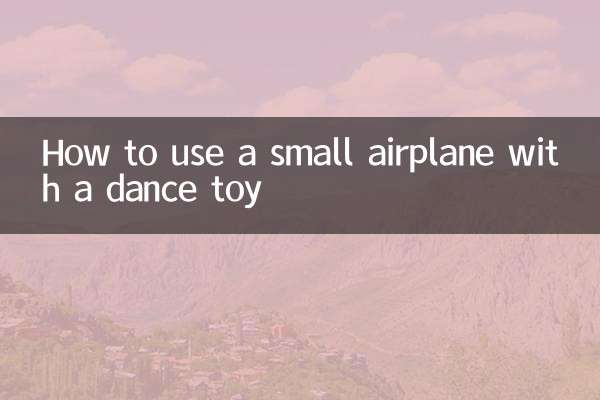How to make a remote control plane yourself
In recent years, remote-controlled aircraft (drone) has become a popular project for technology enthusiasts and DIY players. Whether it is an entry-level small remote-controlled aircraft or a mid-to-high-end model with more complex functions, homemade remote-controlled aircraft can not only satisfy the fun of hands-on, but also customize functions according to personal needs. The following is a compilation of popular topics and hot contents on the entire network in the past 10 days. Combined with structured data, it provides you with a detailed guide to making remote-controlled aircraft.
1. Popular topics and trends

According to the recent online discussion, the following are hot topics related to remote-controlled aircraft:
| topic | Popularity index | Main discussion points |
|---|---|---|
| DIY remote control aircraft cost | 85% | How to make remote-controlled aircraft at low cost |
| 3D printing body | 78% | Application of 3D printing technology in aircraft production |
| Open source flight control system | 92% | Open source solutions such as Arduino and Betaflight |
| Battery optimization | 65% | Battery selection and energy saving skills |
2. Steps for making remote control aircraft
The following is the basic process of self-made remote-controlled aircraft, which is divided into three parts: material preparation, assembly and commissioning:
1. Material preparation
| part | Recommended model/spec | Budget (yuan) |
|---|---|---|
| frame | Carbon fiber or 3D printed frame | 50-200 |
| Motor | Brushless motor (such as 2205) | 80-150 |
| Electrical control | 30A ESC | 40-100 |
| Flying control board | Betaflight F4 | 200-400 |
| Battery | 11.1V 1500mAh lithium battery | 100-200 |
2. Assembly process
(1)Rack building: Fix the arm to the center plate to ensure structural symmetry.
(2)Install the motor: The motor must be arranged alternately clockwise/counterclockwise to offset the reverse torque.
(3)Connecting electric control and flight control: Weld the electric control power cord and the signal cord is connected to the corresponding interface of the flight control.
(4)Install propeller: Pay attention to the matching of the blade direction with the motor steering.
3. Key points of debugging
| Debugging the project | Tools/Methods | Things to note |
|---|---|---|
| Flight control calibration | Betaflight parameter adjustment software | Ensure horizontal placement |
| Motor steering test | Remote control throttle fine adjustment | Removing the propeller operation |
| PID parameter adjustment | Default parameter fine-tuning | Avoid violent shock |
3. Frequently Asked Questions and Solutions
Based on recent high-frequency problems in the forum:
Q1: What should I do if the remote control distance is short?
• Check that the antenna is intact and replace the high-gain antenna.
• Avoid flying in dense Wi-Fi areas.
Q2: Is the plane's deviation severe after takeoff?
• Recalibrate the accelerometer.
• Check whether the rack is horizontal and whether the motor thrust is balanced.
Q3: Battery life is less than 10 minutes?
• Choose a low KV motor with large-size propeller.
• Reduce body weight and upgrade high-capacity battery.
4. Advanced suggestions
For players who want to improve their functions, try:
• Install the FPV image transmission system (budget is about 500 yuan)
• Use GPS module to achieve automatic return
• Customize flight mode with open source code
Although there are certain thresholds for homemade remote-controlled aircraft, most enthusiasts can complete it within 2-3 weeks through reasonable budget planning and step-by-step implementation. It is recommended to choose a mature open source solution (such as ArduPilot) for the first time, and join the local model aircraft community to exchange experience.

check the details

check the details